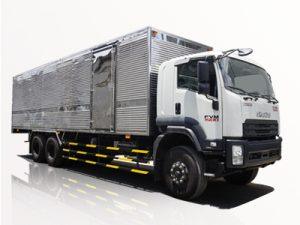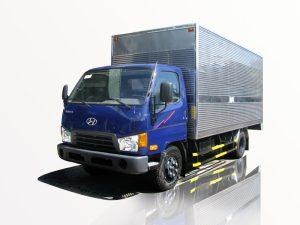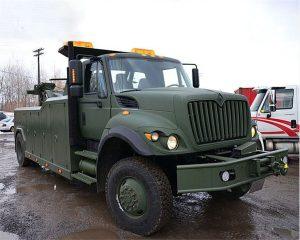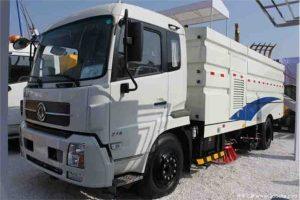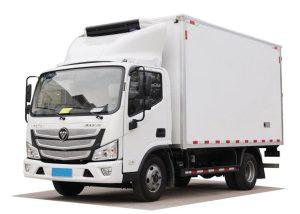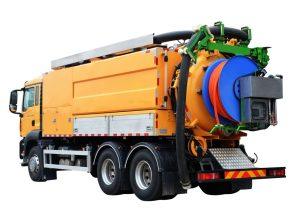Monday to Saturday - 8:00 -17:30
How Much Garbage Does a Garbage Truck Hold? An In-Depth Analysis
Understanding the capacity of garbage trucks is essential for both waste management professionals and everyday citizens. Knowing how much garbage a garbage truck can hold not only provides insights into waste collection efficiency but also helps in planning and organizing better waste disposal strategies.
The Basics of Garbage Truck Capacity
Garbage trucks come in various shapes and sizes, each designed to handle different types of waste. The capacity of a garbage truck is primarily measured in cubic yards or cubic meters. In this section, we will explore the common types of garbage trucks and their typical capacities.
Types of Garbage Trucks
1. Rear Loader Trucks
Rear loader trucks are among the most common types used for residential garbage collection. They usually have a capacity of around 20 to 30 cubic yards.
2. Front Loader Trucks
Front loader trucks are often used for commercial waste collection. They can hold between 30 to 40 cubic yards of waste, thanks to their design that allows for easy loading of dumpsters.
3. Side Loader Trucks
Side loader trucks collect waste from the side and are increasingly popular in urban settings. Their capacity typically ranges from 20 to 30 cubic yards.
4. Automated Garbage Trucks
Automated garbage trucks are equipped with robotic arms that pick up bins. Their capacity also ranges from 20 to 30 cubic yards.
Factors Affecting Garbage Truck Capacity
The effective capacity of a garbage truck can be influenced by several factors. Understanding these can help in planning for waste management more efficiently.
1. Weight Limitations
Besides volume, weight is a crucial factor in determining how much garbage a truck can carry. Most garbage trucks have a maximum weight limit, often around 14,000 to 36,000 pounds, depending on local regulations.
2. Type of Garbage
Different types of garbage (e.g., wet vs. dry waste) occupy different amounts of space. Wet waste is heavier and may require less volume to meet weight limits.
3. Compaction Ratio
Many garbage trucks are equipped with compaction systems that help compress waste, allowing them to hold significantly more than their cubic yard capacity suggests. Compaction ratios can range anywhere from 2:1 to 4:1, meaning a truck can hold up to four times its standard volume when waste is compacted.
Capacity in Practice: Real-World Examples
Understanding capacity in theoretical terms is one thing, but let’s take a closer look at real-world examples to see how different municipalities handle their waste collection.
Example 1: New York City
New York City employs a variety of garbage trucks, with an average capacity of about 20 cubic yards for residential refuse. The city collects approximately 12,000 tons of waste daily, necessitating numerous trips by these trucks.
Example 2: Los Angeles
In Los Angeles, front loader trucks are used heavily for commercial waste, often achieving an average capacity of 30 cubic yards. This capacity enables the city to effectively manage waste generated by its large population and tourist activity.
Example 3: Small Towns
In smaller towns, the capacity may vary due to the community’s size and waste collection policies. For instance, a town may employ side loader trucks with a capacity of 20 cubic yards, collecting waste bi-weekly instead of weekly.
Tips for Better Waste Management
Understanding garbage truck capacities allows both waste management professionals and residents to contribute to effective waste disposal strategies. Here are some practical tips:
1. Know Your Schedule
Understand your waste collection schedule. If your municipality operates on a bi-weekly basis, ensure you manage your waste accordingly to avoid overflow.
2. Sort Your Waste
Sort recyclable and non-recyclable materials. This not only ensures better management of what ends up in the garbage truck, but also promotes recycling efforts.
3. Consider Composting
If you generate significant organic waste, consider composting. This reduces the amount of garbage that needs to be collected, maximizing efficiency.
4. Utilize Community Resources
Many communities offer additional resources for waste disposal, such as bulk waste collection days, which can help in reducing the burden on regular garbage trucks.
Environmental Impact of Garbage Trucks
It is essential to acknowledge the environmental footprint of garbage trucks as they play a crucial role in waste management.
1. Carbon Emissions
Garbage trucks contribute to carbon emissions. On average, a single garbage truck can emit around 3.5 pounds of CO2 for every mile driven. Innovations in electric vehicles are being explored to mitigate these issues.
2. Noise Pollution
Garbage trucks can cause noise, especially in residential areas during early morning collections. Strategies to limit noise and improve collection times can have positive effects on local communities.
3. Eco-Friendly Alternatives
Emerging technologies, such as compressed natural gas (CNG) trucks, are being utilized to lower emissions. Many cities are transitioning to cleaner fuel alternatives to reduce environmental impact.
Technological Advancements in Garbage Collection
The evolution of technology has significantly influenced how garbage collection is carried out.
1. Automated Collection Systems
Many cities are adopting automated systems that streamline waste collection processes, reducing labor costs and enhancing efficiency.
2. Real-Time Tracking Systems
Garbage trucks with real-time tracking capabilities allow municipalities to monitor routes and optimize collection rounds, minimizing emissions and improving service levels.
3. Smart Waste Bins
Smart bins can notify waste management services when they are full, optimizing collection times and ensuring that garbage trucks operate at peak efficiency.
Future of Garbage Trucks and Waste Management
The future of garbage trucks is likely to undergo vast changes as society progresses towards sustainability and efficiency in waste management.
1. Electric and Hybrid Trucks
As electric vehicle technology advances, the adoption of electric garbage trucks will likely become more mainstream, providing a cleaner alternative for waste collection.
2. Waste-to-Energy Solutions
Implementing waste-to-energy systems may change the landscape of waste disposal, converting garbage into usable energy and reducing landfill use.
FAQs About Garbage Truck Capacity
1. How much does a typical garbage truck cost?
A typical garbage truck can cost anywhere from $100,000 to $500,000, depending on its size, capabilities, and technology.
2. How frequently do garbage trucks operate?
This varies by municipality, but most residential areas have collections once or twice a week, while commercial properties may have more frequent pickups.
3. What happens to the garbage collected by trucks?
The collected garbage is typically taken to a landfill, recycling facility, or waste-to-energy plant, depending on the local waste management strategy.
4. Can garbage trucks collect hazardous waste?
Most standard garbage trucks are not equipped for hazardous waste. Communities usually have special programs in place for hazardous waste disposal.
5. Are there regulations on garbage truck emissions?
Yes, many places have regulations to limit emissions from garbage trucks, encouraging the use of cleaner technologies and fuels.
6. How do garbage trucks deal with odors?
Many garbage trucks are designed with features to minimize odors, such as sealed containers and compaction systems, to reduce the spread of unpleasant smells during collection.


